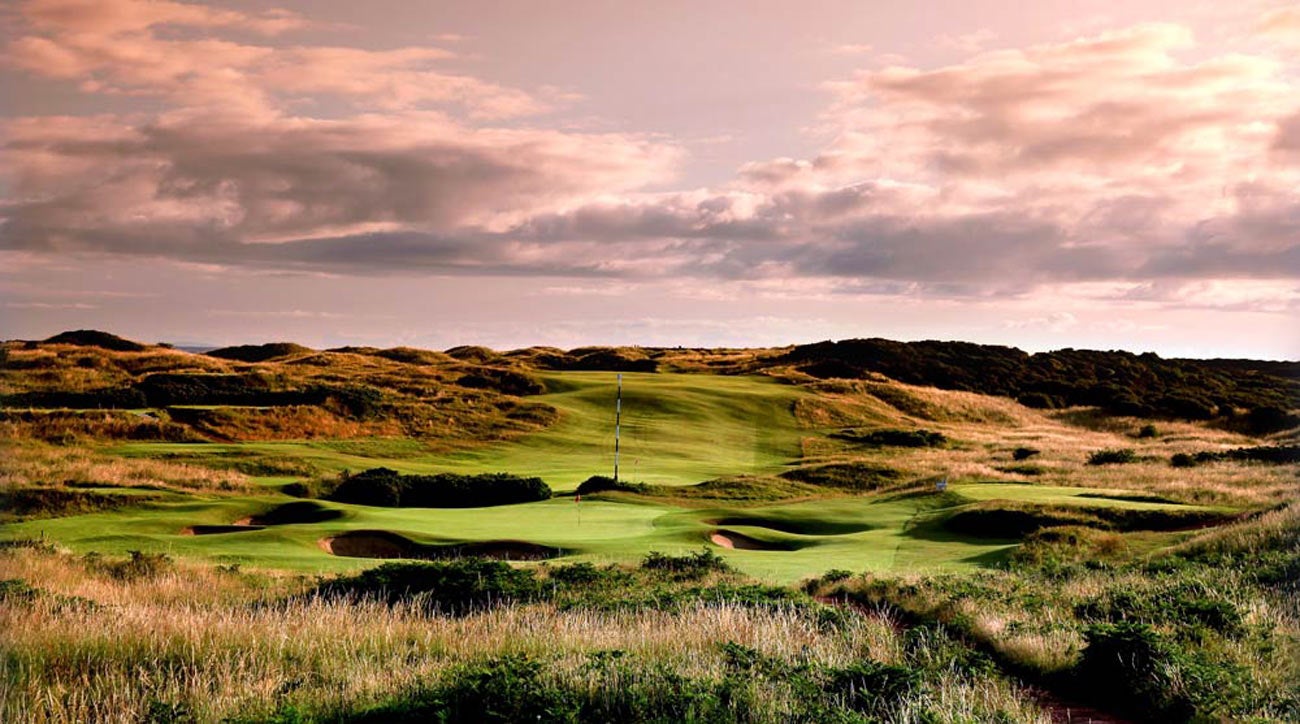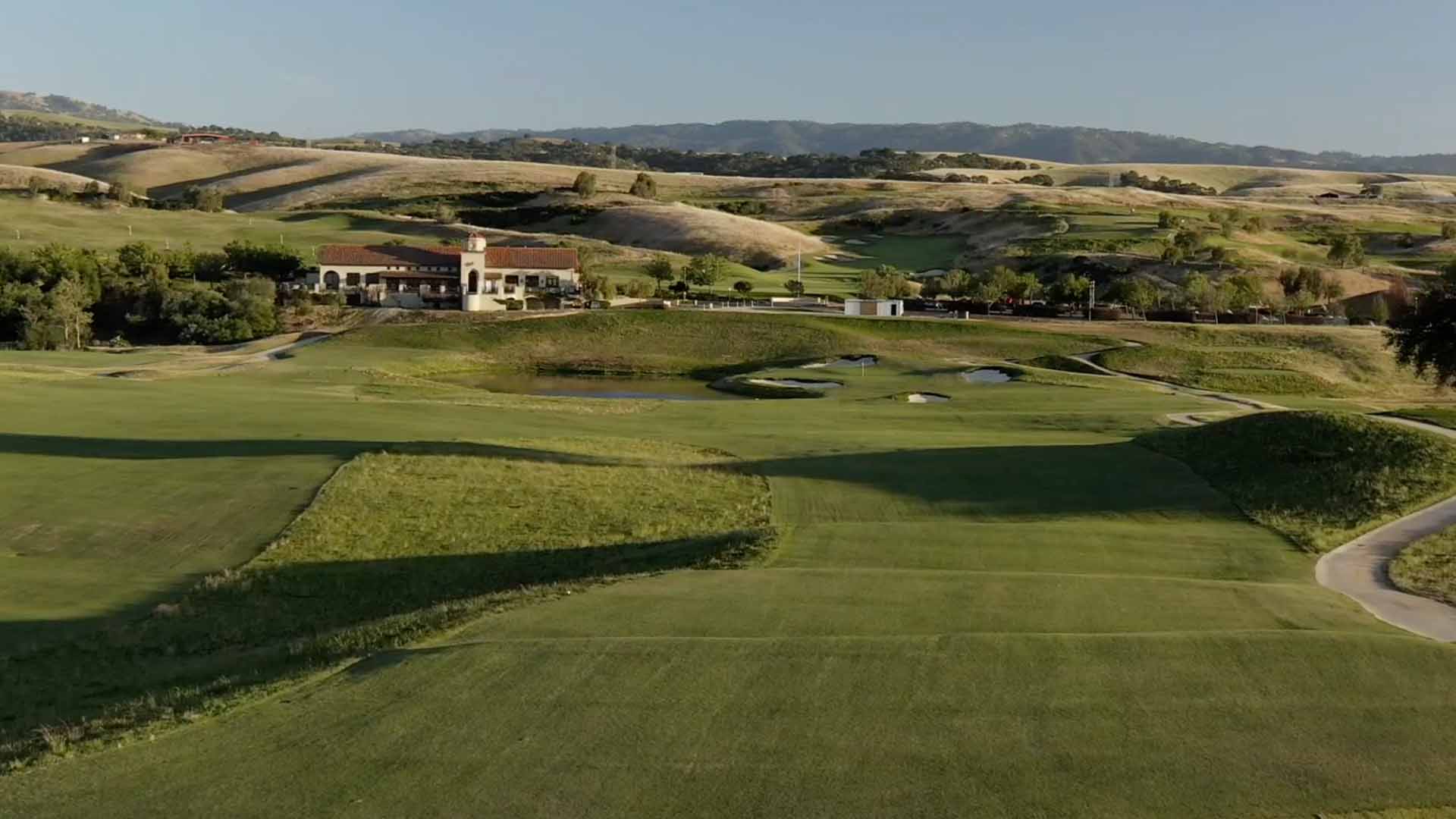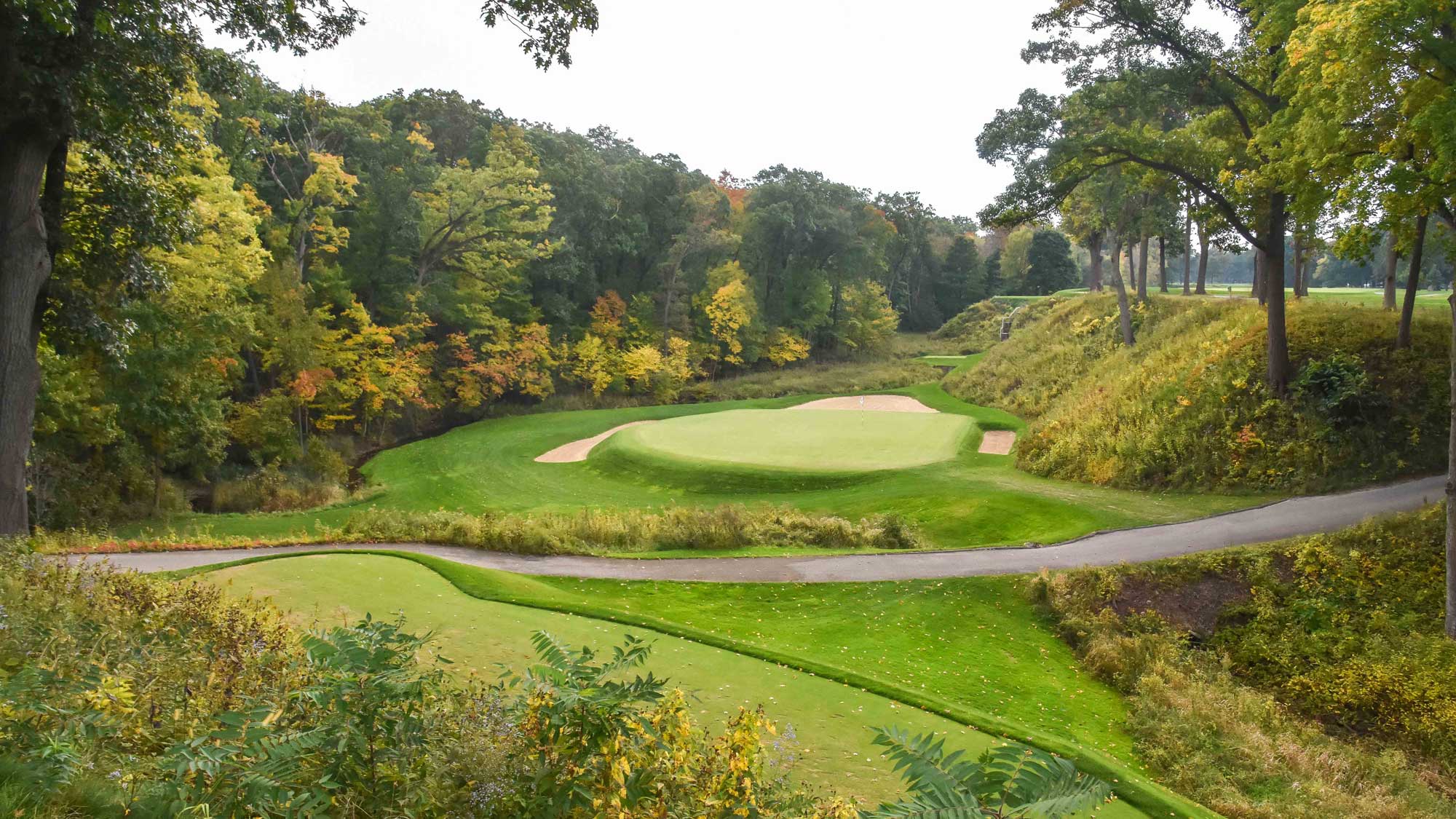I first fell in love with Portrush in the summer of 2019.
The Open had arrived in Northern Ireland, its first time there since 1951. The golf world arrived with it. Thousands cascaded in from the U.K. and Ireland. Thousands more, including me, came from further afield; I took a redeye into Dublin and then made the trek north, watching bleary-eyed as the Emerald Isle whizzed by. I was born and raised in a rural New England town, so while the pastoral landscape was familiar, it felt distinctly different. Older, for one thing. Secluded, for another; the landscape was timeless, outwardly unaffected by time and technology.
I loved the town first. Portrush is a tiny seaside village of 6,000 or so that sits on the northern tip of Northern Ireland. The downtown sticks out in particular, as it’s a one-mile peninsula jutting dramatically into the Atlantic. It’s built for fun: restaurants border beaches, which border pubs, which border arcades, which border ferris wheels, which border more beaches, which border the golf course. And I soon learned to love that, too.
I loved the way the crowds flowed through town. After a day at the course, they’d made their way on foot from the course down into town, dispersing into various pubs along the way, spotting players and caddies and media in their midst, one large group ultimately making it all the way to the Harbour Bar, where bartenders served as many pints as they could draw from the tap.
I loved the town’s vacation feel. Because it sits at 55 degrees north — the latitude of Ketchikan, Alaska or Omsk, Russia — the locals’ standards for a warm summer day are remarkably low. Kids traipsed the beaches of the West and East Strands, braving frigid waters, taking full advantage of a 10 p.m. sunset.
I loved the integration of town and course; the main road that would lead in and out of town brought you directly to the course. This blurred the lines between at Royal Portrush and being in Portrush, as the former was made to feel very much a part of the latter. They take their golf seriously in Northern Ireland, but a golf club’s exclusivity isn’t held up as a badge of honor the way it is in the United States. The people of Portrush were glad we were there and hoped we’d come back.
So we did.
The Masters is a terrific event, but you can’t play Augusta National. Ditto this year’s U.S. Open host site, The Country Club at Brookline, or the PGA Championship venue, Southern Hills. But you can play Royal Portrush. They need you to play Royal Portrush, in fact. The club welcomes visitors, who arrive by hired car or coach bus and pay enough for their tee times that they subsidize prices for local members. This is a modest town with a terrific golf course.
I’d returned with fellow GOLF writer Sean Zak and our videographer Tiffani Lynch to soak up what Portrush felt like when the Open wasn’t in town. When the tournament ended in July 2019, most of the crowds departed, after all. They’ll be back in July 2025, when the Open returns. We arrived in town smack-dab in the middle of August 2022, clubs and suitcases and big dreams all stuffed into our rental.
There are two basic requirements for a memorable golf destination. Number one, your destination requires some effort to get to. Number two, that destination is somewhere worth being. I flew direct from San Francisco to Dublin, took a bus to Belfast and took a train the rest of the way. Green fields and fuzzy sheep whizzed past. A Guinness awaited at the Harbour Bar. It was good to be back.
Many people are aware that Shane Lowry was victorious in the Open here in 2019, but he also won the North of Ireland Amateur Open Championship here in 2008. pic.twitter.com/vdeLORE0tF
— Royal Portrush G.C. (@royalportrush) April 12, 2022
Portrush is better seen than described, so I’ll let the video below speak better than any thousands of words. But the most common question I’ve gotten since my return is this: What makes Portrush so special, rated not just among the top links in the world but the very best courses, period? In simplest terms, here’s where I landed:
1. The elevation changes. Like other top-tier links courses, Portrush has a breathtaking seaside setting. Panoramic views include downtown to the west, the open Atlantic to the north and a dramatic coastline — including the craggy ruins of Dunluce Castle — to the east. But it’s rare to have a links course that features so many hills. As a result both the views and golf shots are more dramatic. The wild dunescape takes you up and around and over humps and bumps and mounds. It’s a more three-dimensional experience than your typical links. It’s also hard as hell.
2. The hole variety. Portrush keeps your head on a swivel; every single hole is oriented in a slightly different direction. Some links courses are 18-track albums, only appreciated when listened to all together. Portrush has 18 hit singles. Not just the showstoppers, like the photogenic seaside par-4 5th and the beefy par-3 16th. Every hole, from Rory’s tragic 1st to the 18th, site of Shane Lowry’s coronation, demands your attention and can be easily recalled at day’s end — ideally back at the Harbour Bar. Because, again, it’s hard as hell.
Remember the nerviest tee shot of Rory McIlroy’s career? It got me, tooBy: Sean Zak
3. The setting. Plenty of links courses boast an epic history. Plenty more boast an epic coastline. Portrush has both; the hundred-year-old trophies will give away the first bit, while the chalky cliffs give away the second. Portrush’s championship layout doesn’t sacrifice in any category. This is, after all, a setting robust enough for an Open Championship and wild enough to serve as a filming location for Game of Thrones. That’s range.
The club was founded in 1888 and its modern routing has been around for nearly a century. In 2019 the course proved itself a fair and timeless challenge. If you pick a rare calm day and hit the ball in the fairway off the tee, you can score. If not? Gorse and fescue and blackberries await. But with a view!
We found the wind. We found what happens if you miss the fairway, and as a result we found the gorse and the blackberry bushes. We found history and legacy and pints in town. One of us even found his way into the Atlantic. As for the rest? Check it out below.











